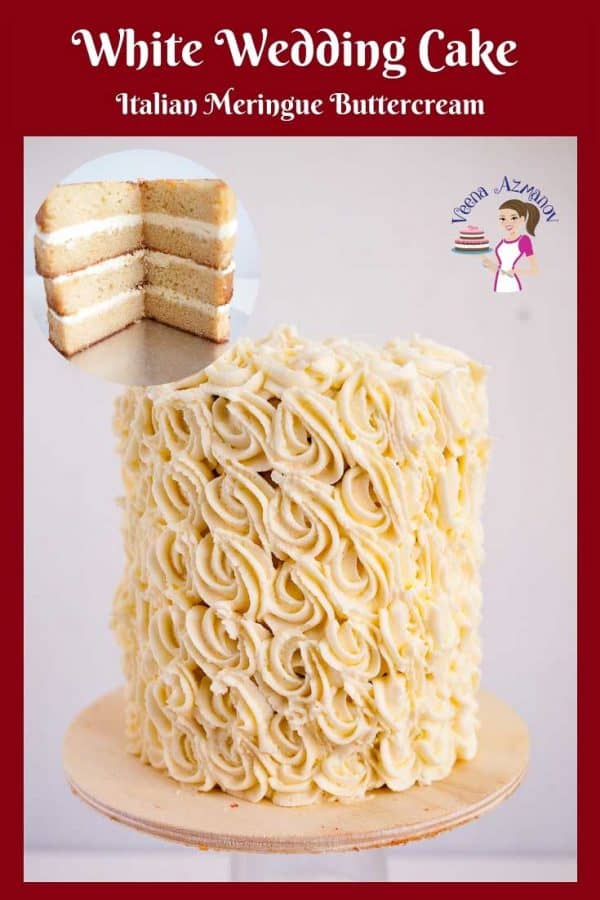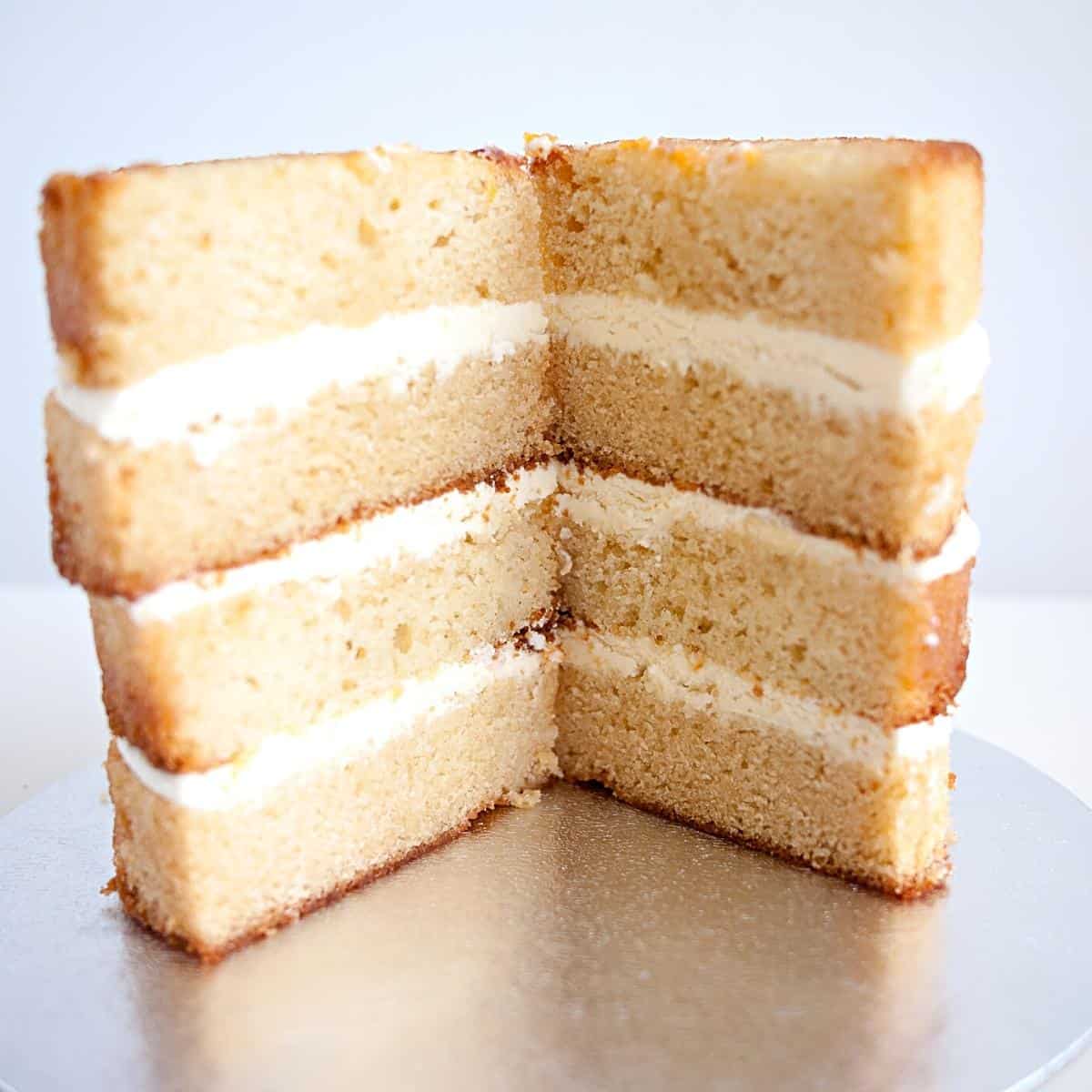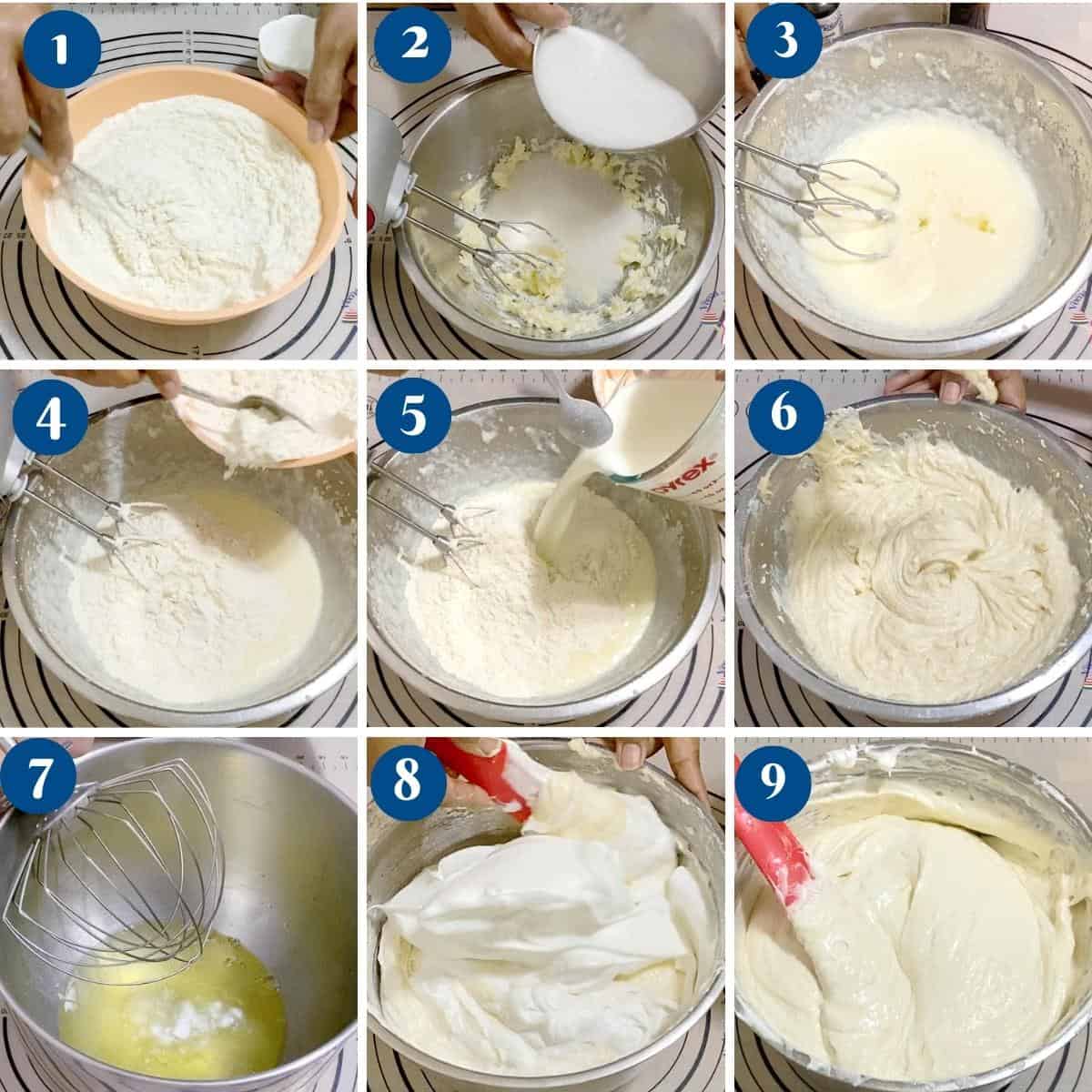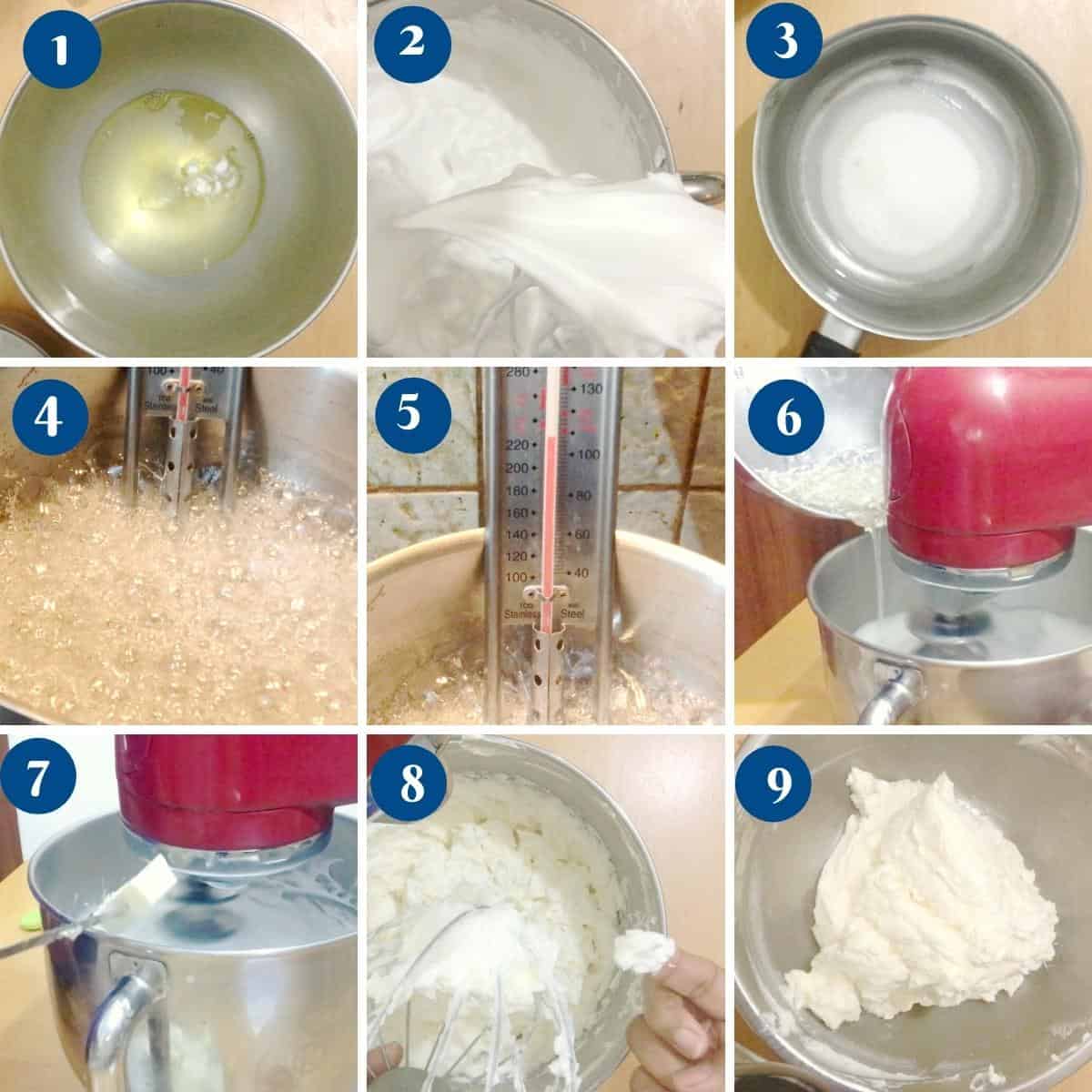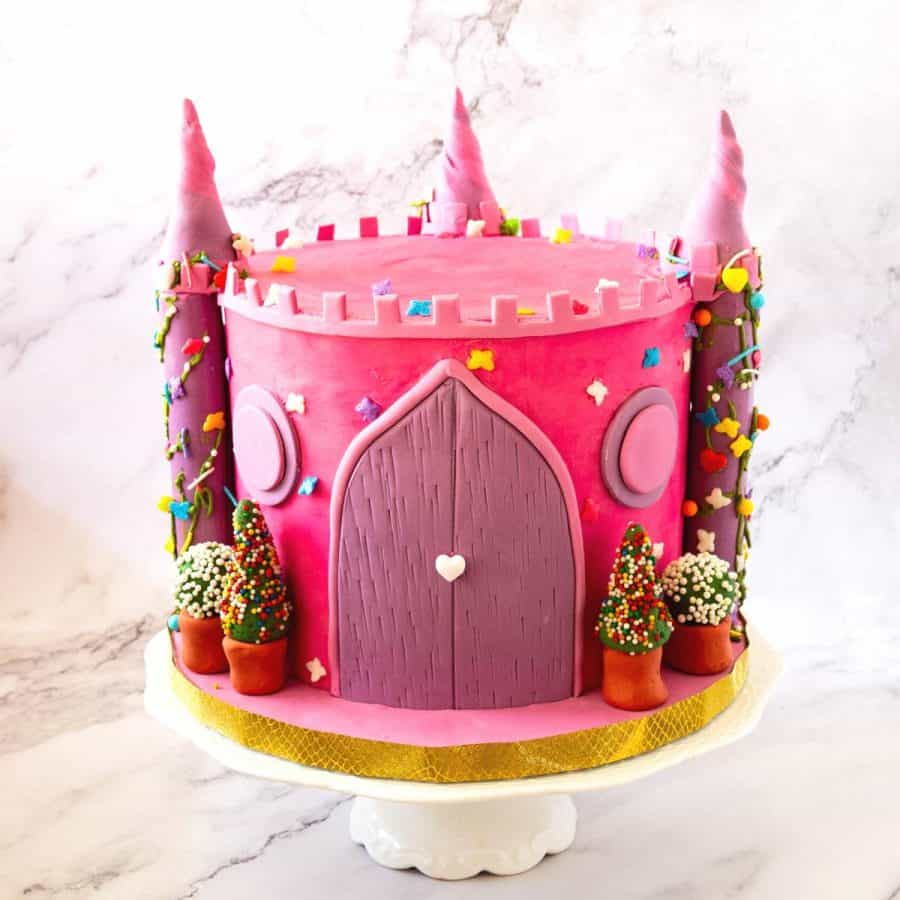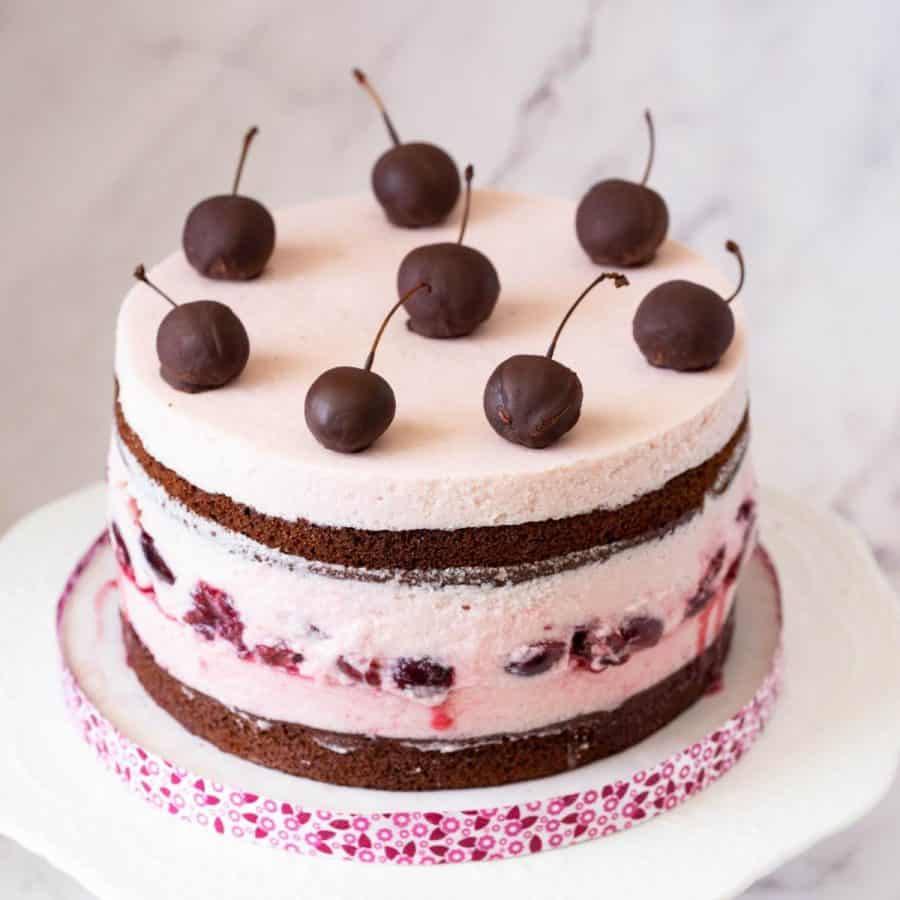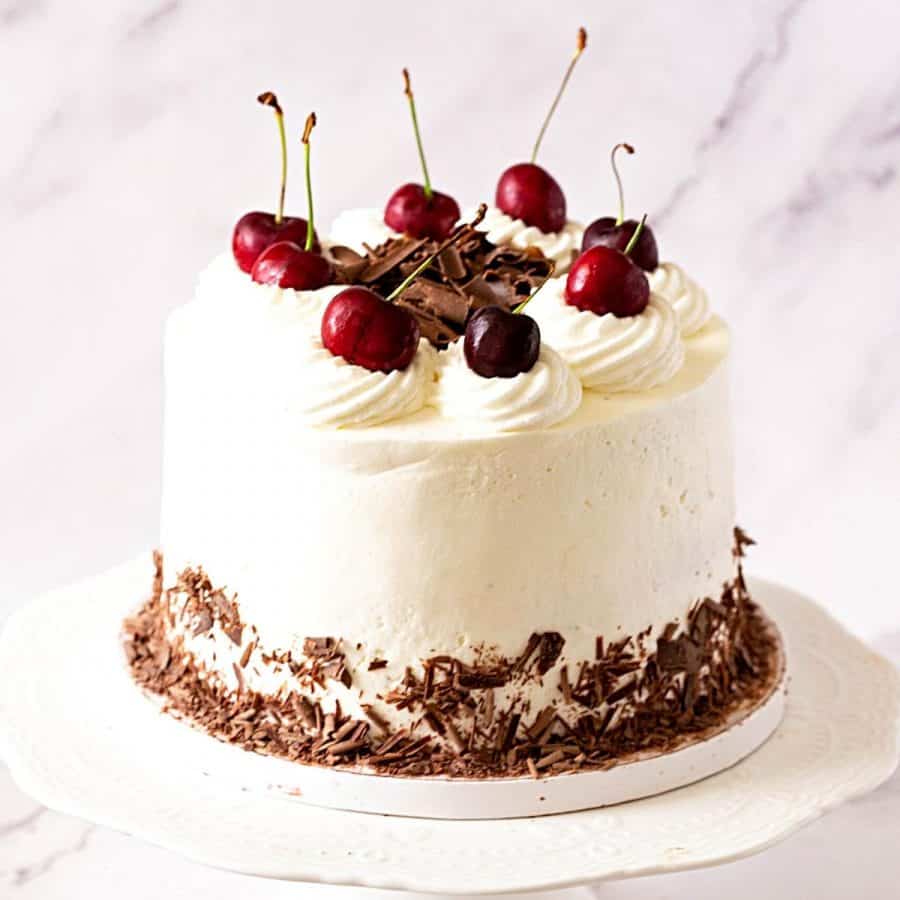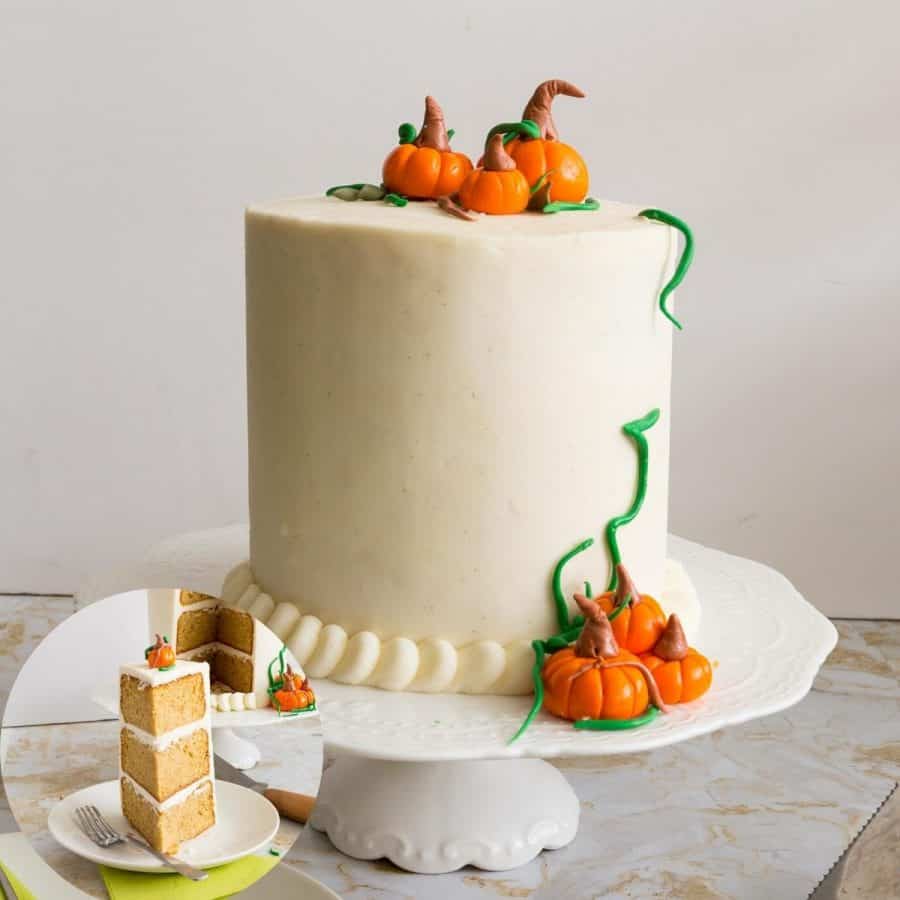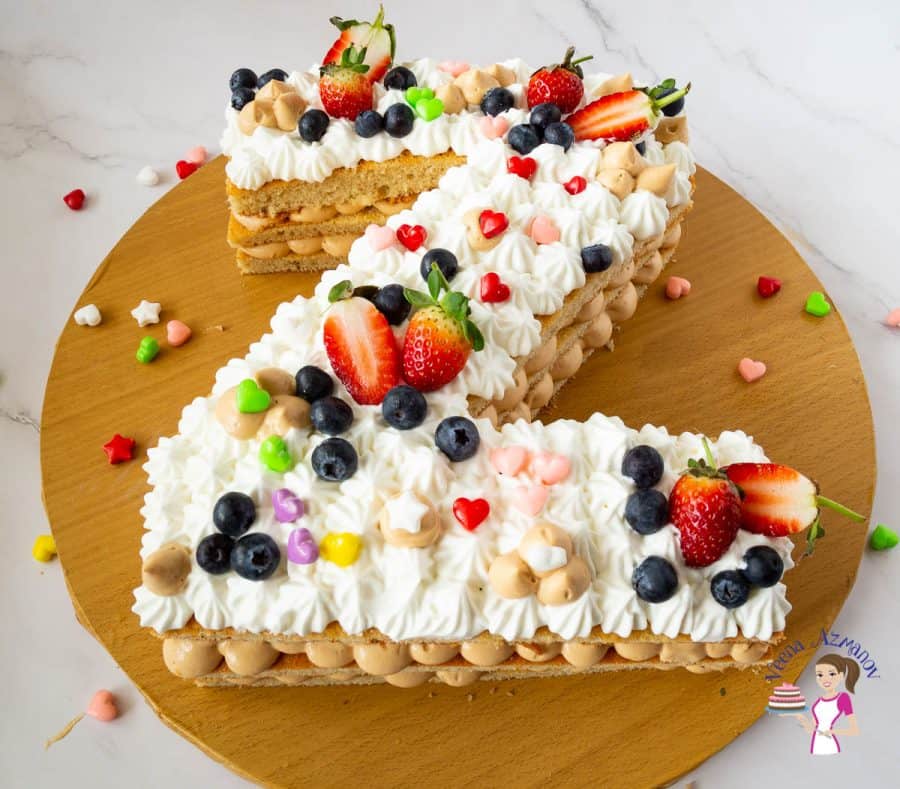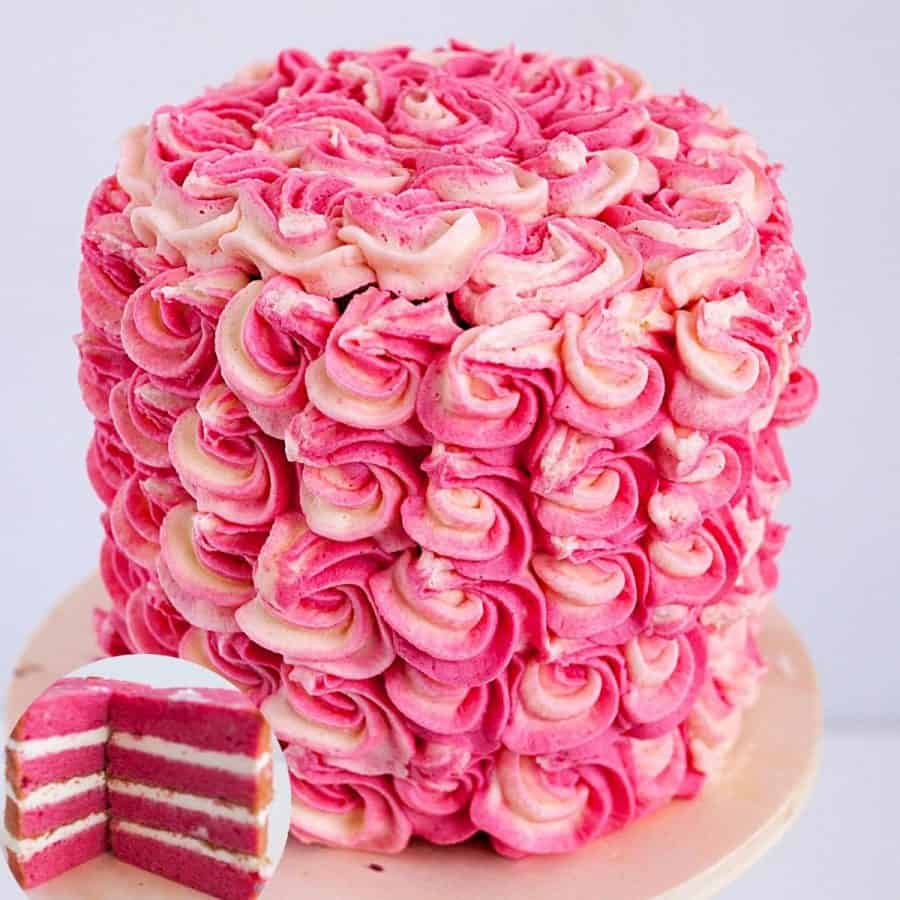A white wedding cake is a traditional type of cake commonly served at weddings. It’s characterized by its white color, which comes from the use of ingredients such as white flour, egg whites, and sometimes bleached sugar. The cake itself is usually vanilla-flavored, though it can be flavored with other extracts or ingredients to suit personal preferences. White wedding cakes are often layered and frosted with white frosting, such as buttercream or fondant, and may be decorated with additional elements like edible flowers, piping, or fondant decorations to match the wedding theme or style. The white wedding cake is a classic choice for couples looking for a timeless and elegant dessert option for their special day.
Why is this the best cake recipe
Texture and Flavor: The cake is made with a combination of butter and egg whites, resulting in a light and fluffy texture. The use of vanilla extract adds a classic and delicious flavor to the cake layers. Italian Meringue Buttercream: This frosting is known for its silky smooth texture and luxurious taste. It’s made by whipping egg whites to stiff peaks and then gradually adding a hot sugar syrup before incorporating softened butter. This creates a frosting that is creamy, stable, and not overly sweet. Torte Layers: By torting the cake layers to create four thinner layers, you add extra depth and flavor to the cake. It also allows for more room for the delicious buttercream frosting between each layer. Versatility: This recipe can be used for various occasions beyond weddings. It’s suitable for birthdays, anniversaries, or any special celebration where you want to impress with a beautiful and delicious cake. Instructions Clarity: The instructions are clear and easy to follow, making it accessible for both beginner and experienced bakers.
Ingredients and substitutes
All-purpose flour: This is the main dry ingredient in the cake batter. It provides structure and stability to the cake. Cake flour can be used for a lighter texture, but you may need to adjust the amount as cake flour is finer and lighter than all-purpose flour. Baking powder: This leavening agent helps the cake rise by producing carbon dioxide gas when combined with moisture and heat. It contributes to the light and fluffy texture of the cake. Baking soda can be used, but you’ll need an acidic ingredient like buttermilk or yogurt to activate it properly. Salt: Even though it’s a small amount, salt enhances the flavor of the cake and balances the sweetness. It also strengthens the gluten structure in the flour, improving the cake’s texture. You can omit salt if necessary, but it may slightly affect the flavor. Unsalted butter: This provides moisture and flavor to the cake. It also adds richness and tenderness to the crumb. Salted butter can be used, but reduce the additional salt in the recipe accordingly. Granulated sugar: Sweetens the cake and contributes to its structure by trapping air during the creaming process with the butter. You can use alternative sweeteners like brown sugar, coconut sugar, or even honey, but they may alter the flavor and texture of the cake. Egg whites: They add structure and stability to the cake while keeping it light and airy. Egg whites also contribute to the white color of the cake. Aquafaba (the liquid from canned chickpeas) can be used as an egg white substitute in vegan baking, but it may affect the flavor slightly. Extract: Vanilla enhances the flavor of the cake and adds a subtle aroma. Other extracts such as almond, lemon, or orange can be used to change the cake’s flavor profile. Whole milk: Provides moisture to the cake batter, resulting in a tender crumb. You can use other dairy or non-dairy milk alternatives like almond milk, soy milk, or coconut milk, but keep in mind that it may alter the flavor slightly.
Step-by-step white wedding cake
For the cake
Preheat your oven to 350°F /175°C/ Gas Mark 4. Grease and flour two 8-inch round cake pans. Dry ingredients – In a medium-sized bowl, whisk together the flour, baking powder, and salt. Set aside. Wet ingredients – In a large mixing bowl, cream together the softened butter and half the sugar until light and fluffy. Dry to wet – Gradually add the dry ingredients to the creamed mixture, alternating with the milk. Begin and end with the dry ingredients, mixing until just combined. Stir in the vanilla and almond extract. Whip – In the bowl of a stand mixer with the whisk attachment whip the egg whites with the remaining sugar until almost stiff peaks form. Then, fold the whipped whites into the batter until well combined but do not mix. Bake – Divide the batter evenly between the prepared cake pans. Smooth the tops with a spatula. Bake in the preheated oven for 25-30 minutes or until a toothpick inserted into the center of the cakes comes out clean. Cool – Allow the cakes to cool in the pans for 10 minutes before transferring them to wire racks to cool completely. While the cakes are cooling, prepare the Italian meringue buttercream.
For the Italian meringue buttercream
Syrup – In a small saucepan, combine the sugar and water. Heat over medium-high heat, stirring until the sugar dissolves. Once dissolved, stop stirring and allow the mixture to come to a boil. On a candy thermometer, cook until the syrup reaches 240°F (115°C). Whip – While the syrup is cooking, beat the egg whites in a clean mixing bowl until stiff peaks form. Meringue – Once the syrup reaches the correct temperature, carefully and slowly pour it into the beaten egg whites while continuing to beat on medium-high speed. Continue beating the mixture until the bowl feels cool to the touch and the meringue is glossy and stiff. Butter – Gradually add the softened butter, one tablespoon at a time, beating well after each addition. The mixture may look curdled at some point, but keep beating until it comes together into a smooth and creamy frosting. Add vanilla extract and beat until fully combined.
Assemble
Level – Once the cakes have cooled completely, torte each layer horizontally to create four thinner layers. Stack – Place one layer of cake on a serving plate or cake stand. Spread a layer of Italian meringue buttercream evenly over the top. Repeat with the remaining layers, finishing with a layer of buttercream on top. Frost – Use the remaining buttercream to frost the sides of the cake, smoothing it out with a spatula for a clean finish. I piped swirls all around the cake with a star piping tip.
Tips for Success
Read the Recipe Thoroughly: Before you begin, read through the entire recipe to familiarize yourself with the steps and ingredients needed. Prepare Ingredients in Advance: Measure out all your ingredients before starting to ensure you have everything you need and to streamline the baking process. Room Temperature Ingredients: Make sure your butter, eggs, and milk are at room temperature. This helps them mix together smoothly and evenly, resulting in a better-textured cake batter. Proper Mixing Technique: Cream the butter and sugar together until light and fluffy. This aerates the mixture, creating a lighter cake. When adding the dry ingredients and milk, mix until just combined to avoid overmixing, which can lead to a dense cake. Even Cake Layers: To ensure even cake layers, use a kitchen scale to measure the batter evenly between the cake pans. You can also gently tap the pans on the counter to release any air bubbles before baking. Torting the Cake Layers: Use a long serrated knife or cake leveler to carefully torte each cake layer horizontally. Take your time to ensure even layers. Italian Meringue Buttercream: When making the Italian meringue buttercream, it’s essential to cook the sugar syrup to the correct temperature (240°F/115°C) to ensure stability. Be careful when pouring the hot syrup into the beaten egg whites to avoid splattering. Incorporating Butter into Buttercream: Add the softened butter gradually, one tablespoon at a time, while the mixer is running on medium speed. This allows the butter to incorporate evenly into the meringue, resulting in a smooth and creamy buttercream. Frosting Technique: Start by applying a thin layer of buttercream (a crumb coat) to seal in any crumbs. Chill the cake for about 15 minutes before applying the final layer of buttercream. Use an offset spatula or bench scraper to smooth the frosting evenly around the cake. Decorating: Get creative with decorating your cake! Use piping tips, edible flowers, or fondant decorations to personalize the cake for the occasion. Chill Before Serving: For best results, refrigerate the assembled cake for at least 1-2 hours before serving. This helps set the buttercream and makes it easier to slice cleanly.
Creative ways to decorate a wedding cake
One easy and classic option is a naked cake! Simply dust the top with powdered sugar and serve with fresh berries or a dollop of whipped cream. If you’re looking for something a bit more unique, try layering sliced strawberries, raspberries, or peaches over the top of the cake for a fruity twist. For a more formal occasion, consider using a piping bag and frosting to decorate the cake with intricate designs or personalized messages. You can also add edible flowers or other decorations to give it a touch of elegance. Another fun option is to cut the cake into fun shapes and designs, such as squares or triangles, and serve on a platter with a variety of toppings and sauces. Whatever your choice for decorating and serving your vanilla cake, be sure to have fun and let your creativity shine.
Creative ways to serve layer cake
Mini Layer Cakes: Create mini vanilla layer cakes using a round cookie cutter to cut out small rounds from the cake layers. Stack them with layers of frosting in between for mini cake towers. Top each mini cake with a decorative frosting swirl, fresh fruit, or edible flowers. Naked Cake: Embrace the “naked cake” trend by frosting the cake layers thinly, allowing the layers to show through. Decorate with fresh berries, edible flowers, or a dusting of powdered sugar for a rustic and elegant look. Cake Push Pops: Serve the cake in push pop containers, alternating layers of cake and frosting. This makes for a fun and portable dessert that guests can enjoy on the go. Cake Milkshakes: Blend chunks of vanilla cake with vanilla ice cream and milk to create cake milkshakes. Top with whipped cream and a mini slice of cake for a sweet and creamy treat. Cake Kabobs: Cut the cake into cubes and skewer them with fresh fruit pieces. Drizzle with a complementary sauce, such as caramel or chocolate, and serve as cake kabobs. Deconstructed Cake: Present the cake in a deconstructed form by serving cake cubes, frosting, and various toppings in separate bowls. Guests can build their own cake creations, allowing for customization.
One bowl vanilla cake Light and fluffy vanilla cake Vanilla bean cake Mom’s vanilla cake See all vanilla cakes or see all layer cakes
Frequently asked questions
Did you LIKE this recipe? Save it for later. You can find my recipes on Pinterest. Follow me on Facebook, Twitter, and Instagram.Subscribe, and I’ll send you new recipes right to your inbox. Thank you for sharing - Save for later
